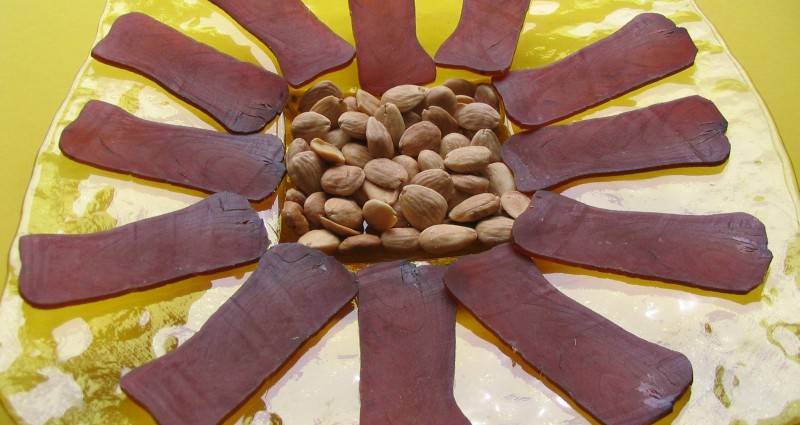The Making Of Mojama

Published by Spanish Food World.
One of the glories of discovering Spanish food is learning about new ingredients or foods that you have not only never tasted before, but never even come across or heard of.
Mojama fits that bill.
In brief, it is cured, wind dried tuna. Chiefly produced in southern Spain and along the very windy coastline known as the Costa de la Luz.
They have been fishing tuna off this coast for centuries. Indeed since the Phoenicians were leading the way in Spanish cuisine. They perfected the technique of making mojama from the location of Gadir in the province of Cadiz.
The tuna meat from the rear of the fish is filleted into long strips, then soaked in salt and washed before being hung out to dry for at least three weeks. You will see this occurring in towns such as Sanlúcar de Barrameda, Barbate, Ayamonte and, before you reach Portugal, the place more famed for growing strawberries – Huelva.
I have seen Mojama served often in the tapas bars of southern Spain. If eating at home, then keep it wrapped and in the fridge. It will be in good condition for several weeks.
The Arabs also preserved tuna by drying it along the windy coast, having first added salt. They called it musama.
Chef Carmelo Diaz Vázquez is from Isla Cristina in the province of Huelva. He says: “In principle mojama can be produced from any variety of tuna. The smaller bonito is suitable and even mackerel. But blue fin tuna has the best and largest fillets for this purpose.
“In addition you naturally have to have the right climate for mojama so that the fillets can dry thoroughly.”
Those who have been making Mojama for years know what they are doing. They cut up the fresh tuna with a large, sharp knife. They carefully take them apart and the pale red fillets are removed. They are then washed with water, salted and left to mature in the salt for a few days.
Carmelo says: “Then the fillets are washed thoroughly once again before being hung out to dry. This slow process sees the fillets shrink and darken until they are a reddish brown colour, are of a firm consistency and dried through completely.”
Carmelo serves them as a snack. Sliced so thinly you can almost see through them. The mojama is marinaded in olive oil for one hour to make them moist. He then toasts a few almonds on the stove and serves the marinaded slices of mojama on a large plate along with the toasted almonds.
You will also come across mojama served in salads, especially in cities such as Murcia and Alicante. They will be cut into small pieces and sprinkled over the salad.
I have come across mojama served alongside anchovies.
But the experts from the deep south of Spain are not in favour of adding anything more than oil to the plate on which mojama is served. They claim anything else takes away from the true and distinctive taste of this specialist way of serving tuna.
No argument from me. I need little motivation to taste mojama.









